|
|
Tombstone Symbols
Probably, the best place to see the language of symbols is in your local cemetery. The following is a small sampling of some common tombstone symbols. Like any type of art, some images fall out of fashion, and some icons are favored in one area and unseen in another. For example, one image common in cemeteries in the Midwest is that of shaking hands. This image is not common in Colorado cemeteries. One note about interpreting cemetery art: while some conventions exist, it is easy to "over-think" a marker. The presence of a primrose might represent eternal love, youth, hope, or sadness. Primroses also have many medicinal uses. The owner of the headstone might've wanted to indicate hope. Or, maybe the person was a pharmacist. Or, they simple could've liked primroses. Or, quite possibly, the design was appreciated by the purchasers of the headstone for purely aesthetic reasons, and had little to do with the deceased. | Symbol, Meaning | Picture | | Alpha and Omega The first and the last letters of the greek alphabet, and a biblical reference to Christ, in Revelation, being "the beginning and the end." | 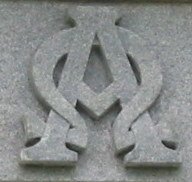
| | Anchor Hope, steadfastness | 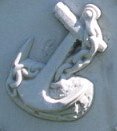
| | Bellflower Gratitude | 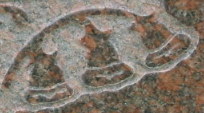
| | Bird, flying Indicates the flight of the soul to God. | 
| | Book Often, represents the Bible, but, it can simply mean knowledge. An open book might signify an open heart or mind, open to the word of God. A closed book usually indicates a completed life. | 
| | Child, sleeping A typical Victorian signifier of a child's grave. | 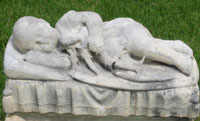
| | Columbine The Columbine is the Colorado state flower, and is common on grave markers in the state, even if it is not found much outside of the state, it is said to indicate gentleness. | 
| | Column, broken Sorrow, broken life | 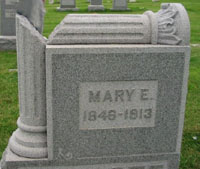
| | Cup A symbol of the Eucharist, this example also has grapes and a vine, reinforcing the meaning. | 
| | Fish Often associated with Christ, with early Christian imagery and part of its coded language, it also indicates bounty, or plentifulness. | 
| | Gates, Portals The entrance to the world beyond the earth, the entrance to heaven. | 
| | Hand, pointing up Usually indicates that the deceased has ascended into the heavenly realm. | 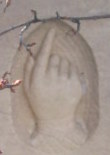
| | IHS This monogram represents the first 3 letters for "Jesus" in the Greek alphabet. In some cases, the letters are overlaid, to create the icon seen to the right. Not to be mistaken for a dollar sign. | 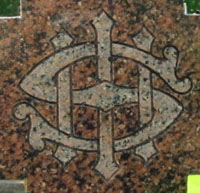
| | Lamb Often a symbol of Christ, also, innocence. This is the most common Victorian marker for a child's tombstone. | 
| | Lily A Lily is an image of purity, but can also be a symbol of Easter, or the resurrection. Lilies were often used for funerals due to their strong scent which tended to help disguise less pleasant aromas. Note in the example, there are three lilies. Three of anything is usually an allusion to the Trinity. | 
| | Lily of the Valley Lilies of the Valley, in cemeteries, tend to represent renewal and resurrection, as they are among the first flowers to bloom in the spring. They can also be a symbol of submitting to God's will, innocence and purity. | 
| | Lyre A lyre is the instrument of Apollo. It could also be referencing the harp, which is a symbol of heavenly music, or hopes of heaven. These types of stringed instruments are often seen as the root of divine music. A harp could also indicate someone of Irish heritage. | 
| | Oak Leaves Oaks are symbols of many things. Strength, endurance, faith and virtue are but a few of these. The oak speaks to the steadfastness of belief, even through tough times. Some believers think that Christ's cross was made of oak. The oak tree is considered sacred to many cultures. | 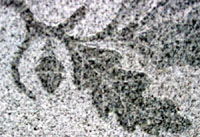
| | Olive Branch Most people understand an olive branch as a symbol of peace. It can also be meant as fruitfulness, purification, and victory. | 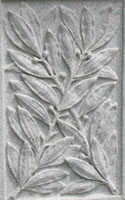
| | Rooster A rooster usually indicates vigilance. Roosters were put on weather vanes to "watch" against evil. | 
| | Rose Roses are known for their fragrance and their beauty. Often they are emblems of the brevity of life or sorrow. In Christian iconography white roses indicate purity, red roses can signify martyrdom. | 
| | Ship A ship is sometimes a representation of the church. It can also simply indicate a life on the sea, as a fisherman or other sailor. | 
| | Thistle The thistle is a reminder of the inevitability of death, or remembrance. It is also commonly used to indicate a person of Scottish descent. | 
| | Torch A torch, as something which illuminates the darkness, represents enlightenment. It can also indicate zeal, liberty or immortality. | 
| | Torch, inverted If the inverted torch has a flame, it indicates that life is continuing after death. If there is no flame, it means the extinction of life and mourning. | 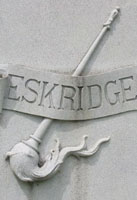
| | Tree Trunk, usually broken Premature death | 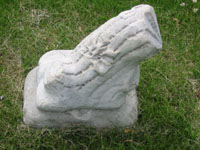
| | Urn, draped Anything draped indicates mourning. An urn typically represents the soul, or mortality. The drape can also be an allusion to the "veil" between this world and the next. | 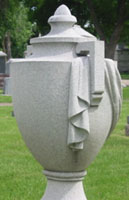
| | Weeping Willow It may be obvious, but, this tree is an image of mourning. In some cultures, it also indicates immortality. | 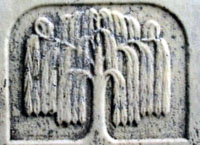
| | Wheat Sheaves An emblem of the divine harvest. If paired with grapes, it's a symbol of the Eucharist. | 
| | Wreath Victory in death. In Christian imagery, it is an indestructible crown worn by the triumphant believer. | 
| | Fraternal Organizations | | Symbol, Meaning | Picture | | Independent Order of Oddfellows The Independent Order of Oddfellows are primarily associated with the three links of a chain. Each "link" in their chain represents their motto "Friendship, Love and Truth," and often the letters "F, L, T" are inscribed within a link each. The order is sometimes referred to as "the poor man's Freemasonry," as the organization shares many of the symbols, such as the all-seeing eye, with the Freemasons. In this example, note the palm fronds flanking each side of the image. Palm fronds represent victory, and, in Christian contexts and cemeteries, it carries the idea of "Victory in Death." | 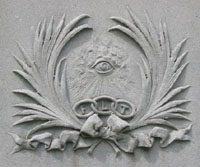
| | Knights of Pythias A heraldic shield with a suit of armor, or any of these with the letter F C B indicate a member of the Knights of Pythias. The letters stand for "Friendship, Charity and Benevolence The Knights of Pythias were fond of symbols, and commonly used more than 20,000 different ones within their organization. | 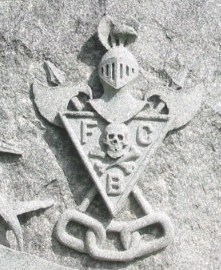
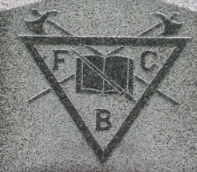
| | Knights Templar It is said that the original Knights Templar founded the Freemasons. The symbol, a Maltese cross with the cross and the crown, includes the latin phrase "In Hoc Signo Vinces," which translates to "In This Sign, Conquer" | 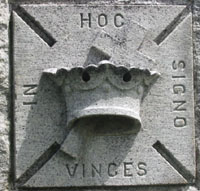
| | Shriners The Shriners are an organization only open to 32nd Degree Master Masons and Knights Templar. Their icons often include the scimitar and other appropriated middle eastern designs. | 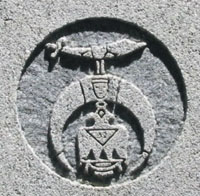
| | Woodman of the World The latin motto of the Woodman of the World, "Dum Tacet Clamat" translates as "Though silent, he speaks," a particularly fitting statement for cemetery art. The Woodman of the World is an insurance company, that originally insured men in particularly dangerous occupations. In the 1920s, an insurance policy with the Woodman also included a grave marker. Most of these came in the form of trees. While not every tree-shaped monument a cemetery belongs to a Woodman of the World, many do. To the Woodman, the tree stump indicated equality. Note that the example also includes a dove with an olive branch, representing peace, and an axe and wedge, indicating woodcraft/craftsmanship. | 
|
Return to Tombstones page from Tombstone Symbols page
|
|




































